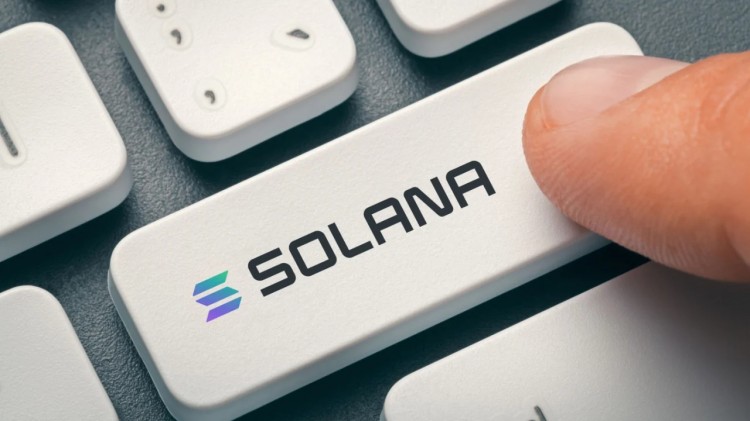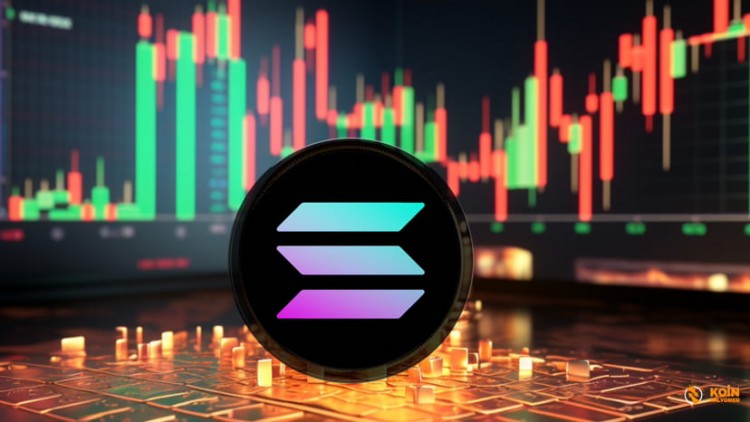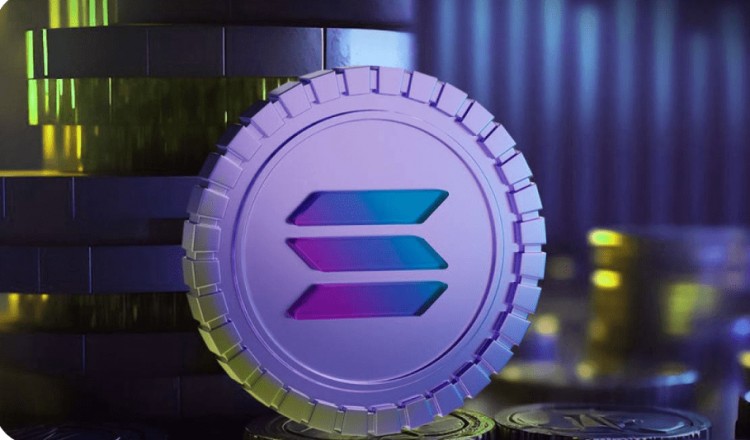
下载
市场动态
新闻稿
关于
广告
面试
作者:
特伦斯·齐姆瓦拉
1小时前
Clone 的核心贡献者和共同发明人 Evan Deutsch 表示,克隆资产、永续合约和桥接代币是两种可以为 Solana 上的非原生资产带来流动性现货市场的工具。 Deutsch 在加密领域被许多人称为 Mark,他警告说,后两种工具都有其缺点,这使得它们不太理想的解决方案。
流动性碎片化问题
在对 Bitcoin.com News 的书面答复中,
多伊奇
断言,永续合约或永续合约最适合短期但高杠杆的策略。然而,从长远来看,持有高管人员的成本高昂,这使得它们不太理想,多伊奇解释道。永续合约“在更广泛的 Solana defi 生态系统中没有实用潜力”这一事实进一步加剧了这一问题。另一方面,桥接代币则面临着马克所说的“流动性碎片问题”。
这位联合发明人还强调了 Uniswap 首创的集中流动性做市商 (CLMM) 与所谓的 Comet 自动做市商的区别因素。他指出了 CAMM 拥有的一些突出优势,这些优势使它们成为更加复杂和资本效率更高的系统。
与此同时,Deutsch 还解释了为什么他的
Clone
团队选择在 Solana 区块链上构建,以及被称为克隆资产的新 DeFi 资产类别如何准备丰富后者的生态系统。以下是多伊奇对所有发送的问题的回答。
Bitcoin.com News (BCN):有人说 Solana 需要创新来为非原生代币带来流动性。为什么在 Solana 上交易非原生资产如此困难?提高非原生资产交易资本效率的最大障碍是什么?
Evan Deutsch(ED):
让我们首先了解什么是非原生资产;来自与其交易所在区块链不同的代币。在 Solana 上,交易这些非原生资产的选择非常有限。
Perpetual contracts, or ‘perps,’ are one of the few tools available. They offer a way to trade non-native assets with high leverage. Although perps are powerful tools, funding rates make them complicated for novice traders and often result in them being expensive to hold over time. Perps are sophisticated financial instruments best suited for short-term, high-leverage strategies. They are also contracts, not tokens, so they have no potential for utility across the broader Solana defi ecosystem.
Blockchain bridges make it possible to introduce a token for any non-native asset to Solana, but there is very little liquidity available to actually trade these bridged tokens. They face what I term the ‘liquidity fragmentation problem.’ The “liquidity fragmentation problem” arises from the multiple decisions and significant initial investment required for a Liquidity Provider (LP) to introduce liquidity for a new bridged token to the Solana ecosystem. First, the LP faces a choice among various bridges, each with its unique features and user base.
They must then select a Decentralized Exchange (DEX) to establish their liquidity pool. This process involves considerable initial costs, and even after setting up, there’s no guarantee that traders will prefer the specific bridge and DEX combination the LP has chosen. This process is too risky for any rational individual or entity to undertake. If we want a scalable solution for onboarding non-native token liquidity to Solana, there has to be another way.
BCN: Can you briefly talk about cloned assets and how these differ from bridged tokens?
ED:Of course. Cloned assets are a brand new defi asset class pioneered by Clone Protocol for optimizing the onboarding of non-native token liquidity to a new chain. Cloned assets can be thought of as bridged assets with superpowers, with their capital efficiency and scalability being the main weapons in their arsenal. Cloned assets holders are actually able to swap these for bridged assets, a critical characteristic that ensures cloned assets will always remain pegged to their non-native counterparts. While cloned assets and bridged assets are, in a way, one and the same, cloned assets give bridged assets a liquidity boost that actually allows them to be traded, utilized, and scaled quickly within any DeFi ecosystem.
BCN: What is the Comet Liquidity System (CLS) and how does it bring non-native tokens with deep liquidity on Solana?
ED:If cloned assets have superpowers, the Comet Liquidity System can be thought of as the laboratory in which they were created. At its core, the CLS is a refined version of what’s known as an automated market maker (AMM). However, our version—the ‘Comet AMM’—is much stronger. The entirety of the liquidity backing CAMMs is in USDC. This makes things simple for LPs because they only need USDC to get started.
The CLS isn’t just about convenience; it’s about pushing the boundaries of AMM efficiency. What really sets it apart is its unique leveraged, cross-margin approach. This approach allows LPs to provide more total liquidity than the amount of USDC they deposit, and that liquidity can be spread across multiple CAMMs. We call this type of position a ‘Comet’, and each Comet is characterized by an amount of deposited USDC backing liquidity positions across multiple cloned asset pools simultaneously. The CLS offers the first solution to the persistent ‘liquidity fragmentation problem’ that has plagued non-native token liquidity on Solana, ensuring efficiency, scalability, and security in the process.
BCN: Can you distinguish a Comet automated market maker (CAMM) from concentrated liquidity market maker (CLMM) in terms of liquidity provision and price determination?
ED:The CAMM is a revolutionary approach to liquidity provision, differentiated by its cross-margined nature. The CLMM, pioneered by Uniswap v3, requires LPs to commit both sides of a trading pair—for instance, they would need both USDC and Arbitrum (ARB) to provide liquidity to a USDC/ARB pool. The amount of provided USDC dictates the lower price boundary, while the amount of ARB sets the upper price limit. Now, suppose an LP wants to provide liquidity to a CAMM pool for USDC/Cloned Arbitrum. The CAMM allows USDC to support both positive and negative price movement at the same time, effectively cutting in half the capital necessary to achieve the same price range as LPs using CLMM.
Another standout advantage of CAMMs is their cross-margin capability, which enables USDC to concurrently support multiple positions simultaneously. This is a stark difference from CLMM, where each position is independent and managed separately.
When it comes to price determination, both CAMMs and CLMMs usually rely on the ‘x*y=k’ constant product formula. However, CAMMs have an additional layer. They incorporate the total cloned assets debt in the pool and real-time oracle prices to calculate quotes, since they’re facilitating trades with USDC alone. Overall, this allows for a more sophisticated and capital-efficient system, maximizing the scalability of any cloned assets.
BCN: What makes Solana the primary choice of blockchain for your protocol and do you believe that the cloned assets can help Solana defi boost token diversity?
ED: My team and I have been champions of Solana for quite some time now. In defi, three principles are king: efficiency, scalability, and innovation. Solana reigns supreme in all three, boasting unparalleled speed and cost-effectiveness. When you aim to create products that embody these qualities, Solana becomes the clear choice.
我们决定在 Solana 上构建 Clone 源于认识到更好地整合非原生代币流动性的迫切需要。区块链上的代币多样性至关重要,没有它,就像拥有一辆最先进的跑车,却没有道路可以行驶。 Solana 的效率是无可争议的,但我们感受到了对更丰富的代币种类的渴望,以真正释放其潜力。事实上,模因币的兴起和最近项目的代币生成事件(TGE)已经开始普及,但我们还远未达到饱和。
克隆资产旨在为现有用户提供更多交易选择来丰富生态系统,更重要的是,为来自其他区块链的用户建立桥梁。克隆资产将为这些用户提供熟悉的机会,邀请他们通过他们已经了解和信任的资产体验 Solana 的优势。正是这种熟悉与创新的融合将催化


因调整而暴涨,但在意外的情况下,Solana的原生代币SOL在经历了2023年9月至12月的强劲牛市后经历了一段动荡期。调整后,Solana暴涨骤降SOL在业绩获得好评后,自2023年10月以来暴涨500%,仅12月份涨...


许多人想知道Solana (SOL)和区块链是否会因为与 FTX 的连接而崩溃。福布斯称,由 FTX 策划人 Sam Bankman-Fried 创立的对冲基金 Alameda Research 是 Solana Lab...


一小时内数百万Solana(SOL)发送至Coinbase,以下是价格反应。Solana的流动资金已接近163亿美元。上述数据源检测到5笔大型Solana转账,每笔转账均包含数千万美元的SOL等值资金。...


Wu表示,他获悉币安Web3钱包宣布已完成Solana网络整合。该更新可帮助用户通过BinanceWeb3钱包管理和交易SolanaNetwork代币,并访问多个SolanaNetworkdApp。新的Solana网络d...